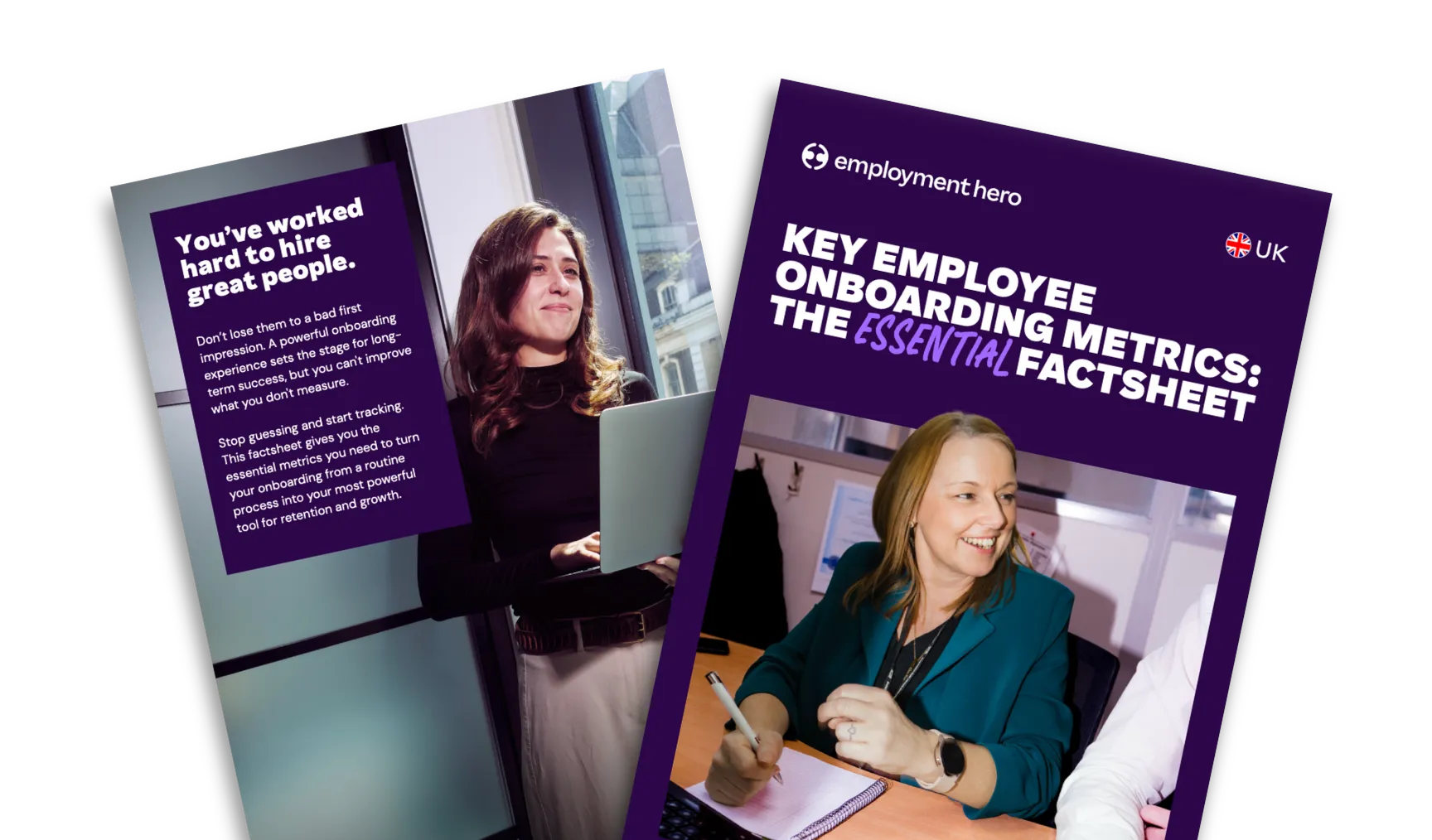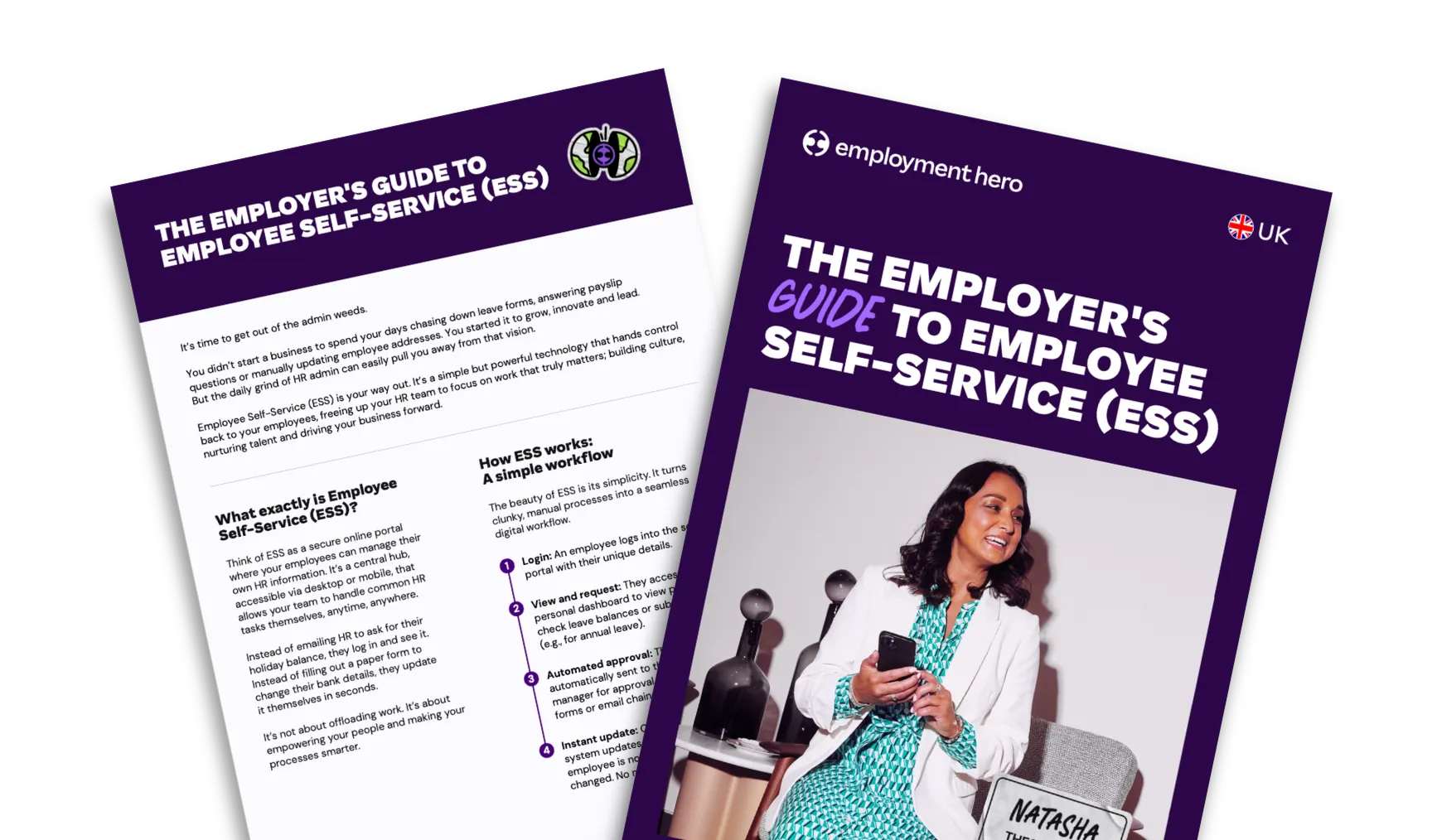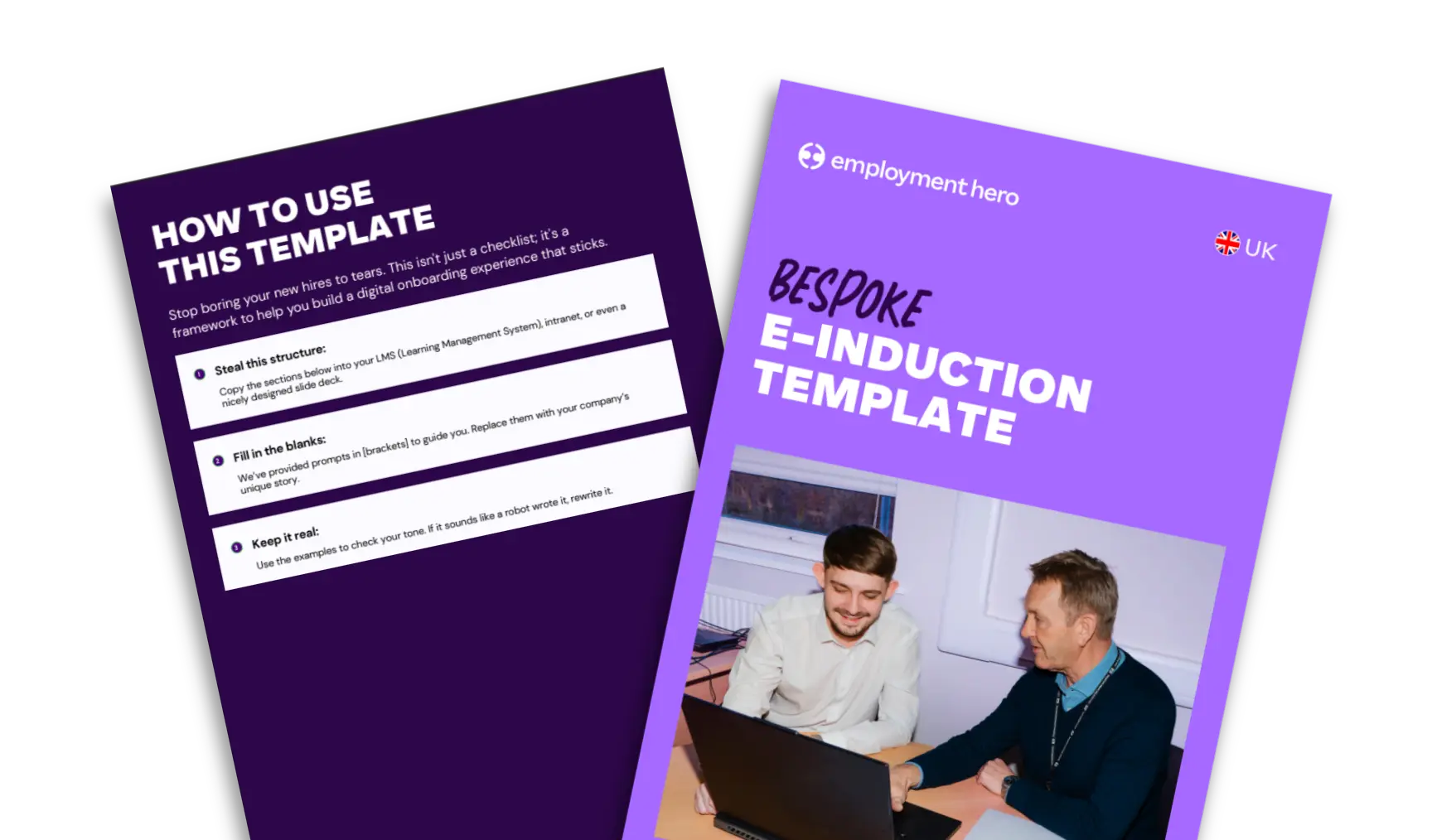Employee Onboarding Guide
Published
Employee Onboarding Guide
Hiring a new employee is just the beginning. What happens next can shape their success, satisfaction and longevity at your business. A clear and consistent onboarding experience helps new hires feel prepared, supported and part of the team from day one.
This Employee Onboarding Guide is your go-to resource for building an effective onboarding process. Whether you’re welcoming your first hire, or looking to improve how you bring people into the business, this guide has everything you need to get started.
Let us help take the stress out of new employee onboarding and set your people up for long-term success.
What’s inside the guide?
Our Employee Onboarding Guide includes everything you need to build a seamless onboarding experience, from the day you send out the contract, to fully assimilating them into your team a few months down the line. In this guide you’ll find:
- A step-by-step breakdown of the employee onboarding process.
- Templates for welcome emails, checklists and feedback forms.
- A 30-60-90-day onboarding plan.
- Best practices for new employee onboarding including remote and hybrid teams.
- Insights into compliance, culture and connection.
So whether you’re onboarding your first hire, or refining an existing process, this onboarding guide helps you do it with confidence.
Who is it for?
This new employee onboarding guide has been created for:
- HR professionals.
- Small business owners.
- People managers.
- Anyone involved in onboarding new employees.
Responsible for welcoming and retaining new talent? Then this guide will give you the tools to do it well.
Why choose Employment Hero’s onboarding guide?
Here at Employment Hero, we’ve supported over 300,000 businesses with smarter streamlined HR processes. Our employee onboarding guide is grounded in real-world expertise, designed to help you avoid common mistakes and create a smooth consistent experience.
From automated contracts to digital policy acknowledgements our HR software simplifies the entire employee onboarding process. With this guide you’ll learn how to combine structure and personalisation to build trust from day one.
Download your free onboarding guide
Ready to transform how you welcome new employees? Download your employee onboarding guide today and start building a process that sets people up for success.
Onboarding FAQs
Employee onboarding is the structured process of integrating a new team member into your business. Onboarding covers everything from the first welcome email to becoming confident productive members of your team.
A strong employee onboarding process helps new hires feel confident, connected and clear on what’s expected. When done well, onboarding improved employee engagement, performance and long-term retention. Think of onboarding as the first chapter in the employee lifecycle. Get it right and you’ll set the stage for a successful and lasting working relationship.
Employee induction is the initial stage of onboarding. It’s the formal process of introducing a new hire to your organisation, their team and the tools they’ll use every day. Induction might include office hours, health and safety training, key policies and an introduction to company culture. It’s often a one-off event, usually within the employee’s first day or week.
Employee inductions are usually seen as a short-term introduction to the business, whereas onboarding is seen more as a longer-term strategy that continues beyond the first week and can last a few months.
A complete onboarding guide will cover a 30-60-90 day plan, regular check-ins, role-specific training and cultural integration.
In short, induction is a part of onboarding but effective onboarding goes further to support new hires as they settle into their role and the wider business.
An induction process should introduce the employee to your business, their team and any systems or tools they’ll use. It should also include:
- A welcome session
- Key policies and procedures
- Health and safety information
- IT and equipment setup
- An overview of company values and culture
The most effective employee onboarding process lasts at least 90 days. Some organisations extend onboarding to six months or even a year, depending on the role. This gives new hires time to understand their responsibilities, form relationships and deliver results.
The four key stages of onboarding are:
- Preboarding – preparation before the first day
- Orientation – the first day or week of introductions
- Integration – ongoing training, feedback and cultural connection
- Performance – setting goals and measuring outcomes
Each stage is essential for supporting new employee onboarding and long-term success.
A 30-60-90 day plan breaks the employee onboarding process into achievable milestones. It outlines what the employee should learn, do and deliver in their first three months. This structure helps employees build confidence and managers track progress.
To support remote onboarding new employees, use clear communication and digital tools. Start with virtual welcome sessions, video introductions and online checklists. Follow up regularly and use surveys to track how new hires are settling in. Our remote onboarding tips can help you make every employee feel included, no matter where they work.
Onboarding is a shared responsibility between HR, managers and team leaders. HR sets up the process and ensures compliance, while managers lead role-specific training and cultural integration. A great onboarding experience requires collaboration from across the business.
First impressions matter. A poor onboarding experience can lead to disengagement and early exits. In contrast, a strong new employee onboarding process boosts confidence, builds loyalty and increases long-term retention. It shows new hires they’re valued from day one.
Register for the onboarding guide
Related Resources
-
 Read more: Key Employee Onboarding Metrics and KPIs to Track
Read more: Key Employee Onboarding Metrics and KPIs to TrackKey Employee Onboarding Metrics and KPIs to Track
Discover the top onboarding metrics and KPIs every UK employer should track, and how to measure the success of your…
-
 Read more: What is Employee Self-Service (ESS)? How It Works & Employer Benefits
Read more: What is Employee Self-Service (ESS)? How It Works & Employer BenefitsWhat is Employee Self-Service (ESS)? How It Works & Employer Benefits
Learn how Employee Self-Service (ESS) simplifies HR admin, empowers staff to manage their data and frees your HR team to…
-
 Read more: How to Create Bespoke E-Inductions For New Hires And Contractors
Read more: How to Create Bespoke E-Inductions For New Hires And ContractorsHow to Create Bespoke E-Inductions For New Hires And Contractors
Learn how to design bespoke e-inductions for new hires and contractors. Discover flexible, learner-centred solutions to improve onboarding and retention.



















